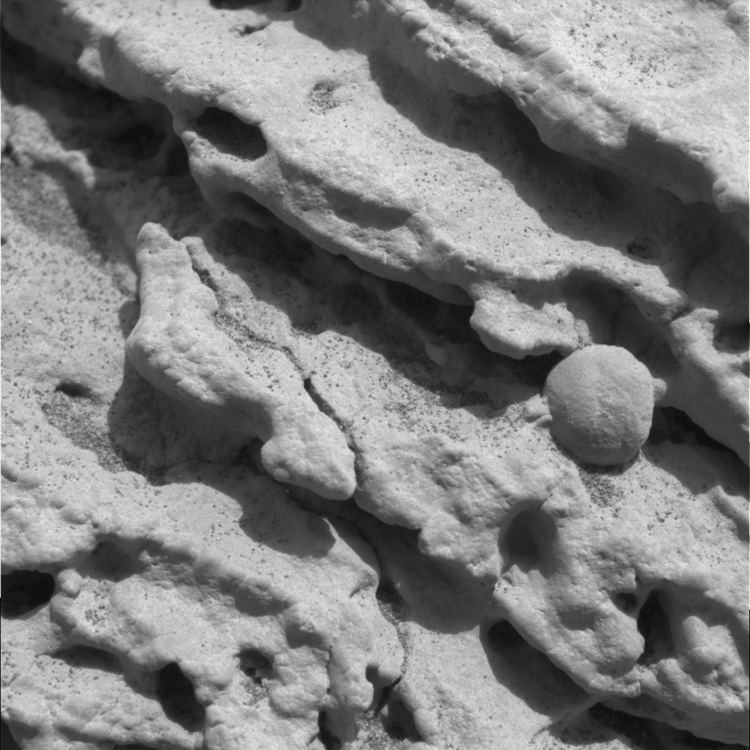 | ||
Martian spherules (also known as blueberries due to their blue hue in false-color images released by NASA) are the abundant spherical hematite inclusions discovered by the Mars rover Opportunity at Meridiani Planum on the planet Mars. They are found in situ embedded in a sulfate salt evaporitic matrix, and also loose on the surface.
Causes
"A number of straightforward geological processes can yield round shapes," says Hap McSween. These include accretion under water, meteor impacts, or volcanic eruptions. The principal investigator, Steve Squyres, indicates they could alternately be concretions, or accumulated material, formed by minerals coming out of solution as water diffused through rock.
Ranging in size from less than 100 micrometers to more than 250 micrometers, similar spherules were found in Moon soil samples collected by Apollo 12 at the Procellarum Basin, and Apollo 14 near Mare Imbrium (Sea of Rains), the dark crater that dominates the Moon's face, and their properties were consistent with expectations for creation by meteor impacts.
Not only are there spherules on the surface but they are also found deeper in the Martian soil. The difference between these and ones which were found at the surface was that they had a very shiny surface, that created strong glints and glares which made them appear shiny or polished. On March 2, Opportunity mission scientists reported that they concluded a survey of the distribution of spherules in the bedrock. They found that the spherules spread out evenly and randomly inside the rocks, and not in layers. This supports the notion that they grew in place, since if their origin was related to volcanic or meteoric episodes one would expect layers of spherules as a "record in time" for each event. This observation was added to the list of evidence for liquid water being present at this rock site, where it is thought the spherules formed.
